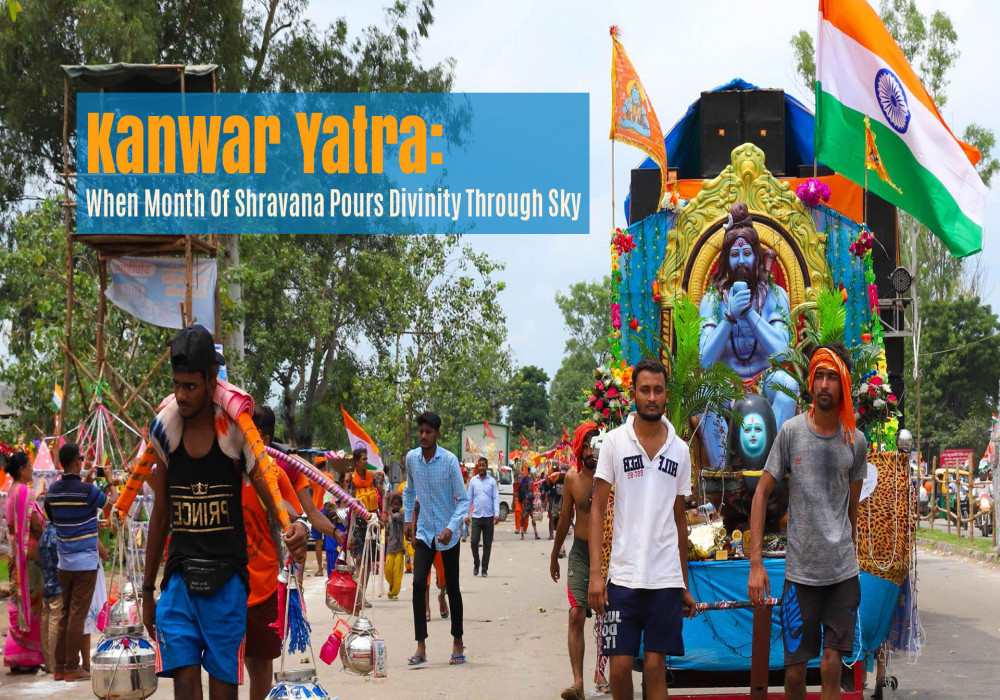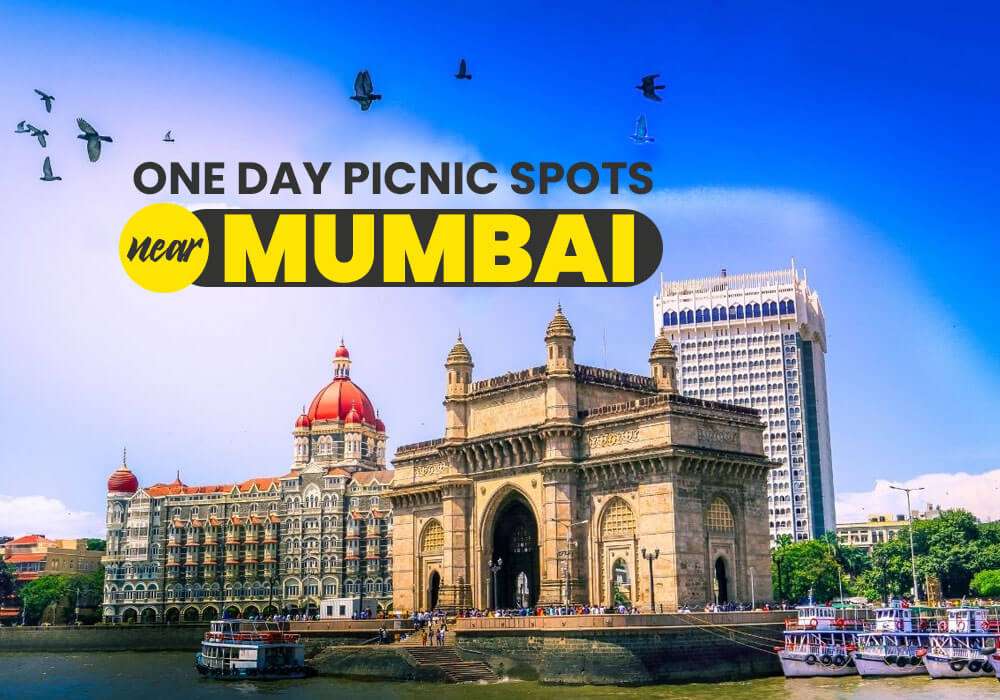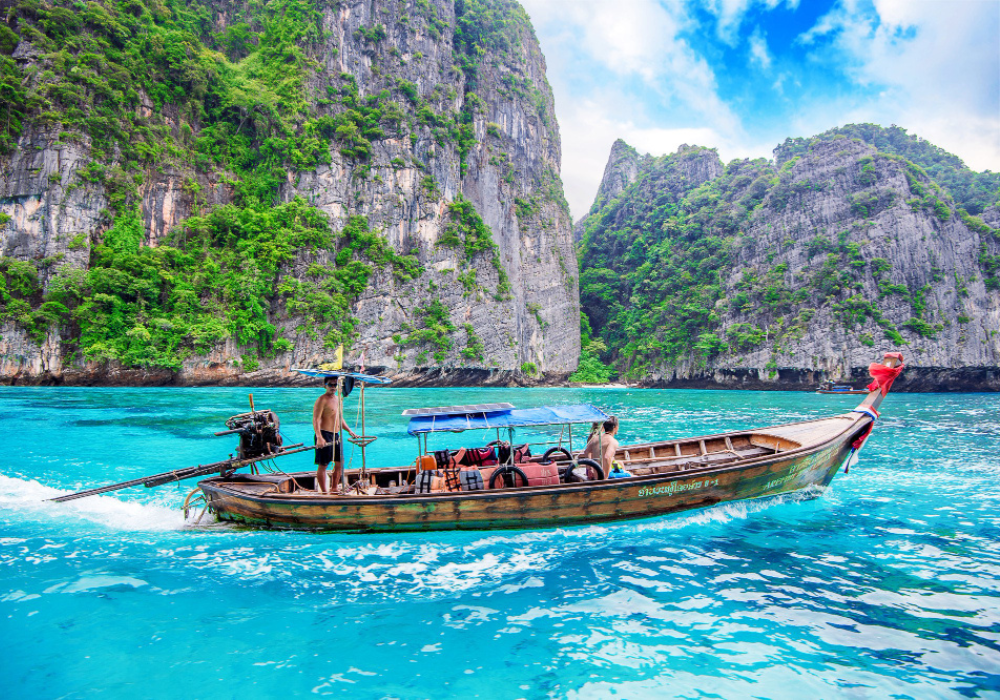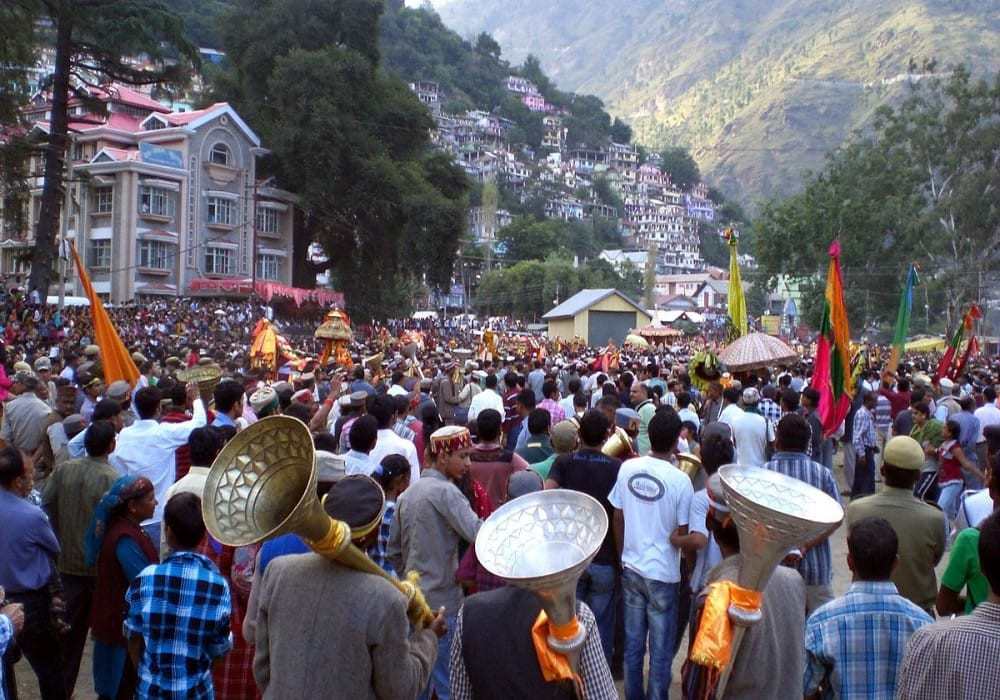
Last Updated At: 27-Jan-2025
Kanwar Yatra 2025: Dates, Rituals, Types and Importance
In Hindu mythology, Lord Shiva holds immense prominence, revered as the Adiyogi - the first yogi who imparted divine knowledge to the first seven rishis, the saptarshi, guiding them to spread divinity in all directions. This collection of stories, traditions, and rituals connected to Lord Shiva includes the Kanwar Yatra, an annual pilgrimage by devoted followers called Kanwarias during the Shravan month. This period marks the arrival of the southwest monsoons in India, starting from the first day of the full moon in late July and concluding by the third week of August.
This article explores the Kanwar Yatra significance, its historical background, and the various types of Kanwar Yatra. We will also delve into the spiritual importance of the Shravan month, highlighting the practices and rituals devotees observe. Lastly, we will provide the schedule for the 2025 Kanwar Yatra and discuss its profound spiritual significance.
History of Kanwar Yatra
In the 1980s, the significance of Kanwar Yatra was a relatively small affair, with only a few saints and other participants. As the pilgrimage gained popularity, it became one of the largest annual religious gatherings. Today, over three crores of Kanwarias participate in the Yatra, showcasing the incredible belief and devotion of the pilgrims.
Mythological Prominence
The roots of the Kanwar Yatra trace back to the churning of the ocean. According to popular folklore, Lord Shiva saved the world by inhaling poison when the world faced a crisis, as poison emerged before amrita (the nectar of immortality). Despite facing the consequences of the poison's negative energy, Shiva's actions were selfless and heroic.
In the Treta Yuga, Ravana, a devout follower of Lord Shiva, brought the holy water of the Ganges using a Kanwar and poured it on Shiva's temple in Pura mahadeva, relieving Shiva of the poison's ill effects. This act of devotion is commemorated through the Kanwar Yatra, where pilgrims carry water from sacred rivers to offer at Shiva temples. Now that you understand “what is Kanwar Yatra”, let's take a closer look at its spiritual significance!
The Spiritual Significance Of Kanwar Yatra in Shravan Month
The entire month of Shravan is dedicated to the devotees of Lord Shiva, who engage in fasting, penance, and other spiritual activities. This period falls within Chaturmas, four months of austerity, fasting, and holy river baths. During this month, thousands of saffron-clad pilgrims, including some women, carry Kanwars (poles) on their shoulders. While most travel on foot, some use vehicles like trucks, bikes, and scooters.
Rituals Observed During Shravan Month
- Offering Milk: Devotees offer milk to Lord Shiva, believing it earns them spiritual merit (punyas).
- Wearing Rudraksha: Many wear Rudraksha beads and use them during japas (chants).
- Offering Bhibhuti: Bhibhuti (sacred ash) is offered to Lord Shiva.
- Panchamrit: A mixture of milk, ghee, butter, honey, and jaggery is offered to Shiva.
Kanwar Yatra Types
There are three main types of Kanwar Yatra:
- Dak Kanwar: Devotees take turns carrying the water before passing it to other group members.
- Khadi Kanwar: The Kanwar cannot be placed on the ground; another person must hold it when the devotee rests.
- Baithi Kanwar: The Kanwars can be put down using special stands.
Read More : Famous Shiva Temples To Visit In South India
Kanwar Yatra Rules
- Devotees follow specific rules during the Kanwar Yatra:
- Avoid using cosmetics throughout the journey.
- The journey is always done in groups.
- Avoid consumption of alcohol, onion, and garlic.
- The Kanwar cannot be placed on the head or beneath a tree.
- Transportation is forbidden; all devotees must travel barefoot.
Kanwar Yatra 2025 Schedule
The Kanwar Yatra, a revered pilgrimage, will begin on July 11, 2025, and conclude on August 9, 2025, coinciding with the holy festival of Sawan Shivratri. This journey is eagerly anticipated by devotees all year, who participate by carrying holy water from the Ganges River to offer to Lord Shiva. This year, Sawan Shivratri falls on August 9nd, marking the end of the Yatra.
During the yatra, the fervent chants and hymns of the participants create a deeply spiritual atmosphere. The culmination of Sawan Shivratri, with the offering of Kawad Jal, symbolises the devotees' dedication and faith, seeking blessings and the fulfilment of their prayers. This pilgrimage is a profound expression of devotion, unity, and cultural heritage.
The Rituals of Kanwar Yatra
During the Kanwar Yatra, pilgrims known as Kanwarias carry a "Kanvar," a small bamboo pole with two colorful clay pots attached to its ends, balanced on their shoulders. Kanwar meaning a sacred pilgrimage dedicated to Lord Shiva, involves these pots being filled with sacred water, which the Kanwarias collect from designated pilgrimage sites to offer at the shrine of Lord Shiva.
The Kanwar Yatra is a month-long spiritual journey during which devotees, clad in saffron and walking barefoot, gather holy water from specific locations. Upon returning to their hometowns, they visit local temples to perform the "abhisheka," or holy anointing, of the Shivling and express gratitude for the blessings in their lives.
A crucial aspect of the journey is ensuring that the clay pots never touch the ground. To accommodate this, makeshift platforms are set up along the route, allowing Kanvarias to rest without placing the pots on the ground.
Kanvarias typically travel in groups, with most walking the entire distance. However, some opt for transportation methods like motorcycles, bicycles, scooters, jeeps, or mini-trucks. Throughout the journey, these devotees chant "Bol Bam" and other devotional songs in honor of Lord Shiva, creating an atmosphere of deep devotion and spiritual fervor.
Conclusion
The Kanwar Yatra is a profound spiritual journey that highlights the devotion and faith of Hindu pilgrimage. From its historical roots to the various types of Yatra and the strict rules followed by devotees, the pilgrimage is a testament to the enduring significance of Hindu traditions. As the Kanwar Yatra 2025 approaches, devotees look forward to embarking on this sacred journey, gathering the holy water of the Ganges, and seeking the divine blessings of Lord Shiva.
Plan your trip with Adotrip today. Enjoy a wealth of information, end-to-end travel assistance and BOOK Flights, Hotels, and Tour Packages under one roof.
With Adotrip, nothing is far!
Frequently Asked Questions About Kanwar Yatra
Q. What is the Time of Kawad Jal 2025?
A. Since this year, the month of Shravan includes Adhikmas, there will be two Sawan Shivratris. The first Shivratri is on July 11, with Jal time from 12:11 AM to 12:54 AM on July 16, and the second is on August 09, with Jal time from 12:09 AM to 12:54 AM on August 15.
Q. Which Month is Kawad Yatra in?
A. The Kanwar Yatra takes place during Shravan, which in the Hindu calendar typically falls between late July and mid-August.
Q. Where Does Kawad Yatra Start?
A. The Kanwar Yatra usually starts from various holy sites along the Ganges River, including Haridwar, Gaumukh, and Sultanganj, where devotees collect the sacred water.
Q. What is the Kanwar Yatra Route?
A. The Kanwar Yatra route involves pilgrims traveling from these holy sites back to their hometowns, often covering hundreds of kilometers, to offer the sacred water at local Shiva temples or specific temples like Kashi Vishwanath and Pura Mahadeva.
--- Published By Adotrip
Latest Blogs

Cash in the Wild: My Safari Adventure Across Kenya with Only...

One Day Picnic Spot Near Pune - Adventure, Trekking and Natu...

One Day Picnic Spots Near Mumbai - Monsoon, Adventure, Beach...

The Best Places to Go in Thailand in 2025












.jpg)
 Dubai
Dubai Malaysia
Malaysia USA
USA





